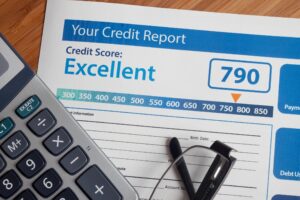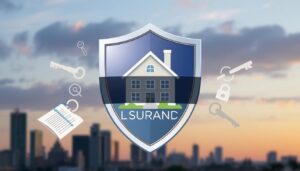Understanding Chapter 13 Bankruptcy: A Comprehensive Guide
Chapter 13 Bankruptcy is a form of debt relief that requires you to make payments to creditors over a three- or five-year period, after which any qualifying debts that remain are discharged, or canceled. Here’s how it works.
How Does Chapter 13 Bankruptcy Work?
Chapter 13 is a provision of federal bankruptcy law which enables individuals, married couples, and businesses that cannot pay their debts to start over. Like other forms of bankruptcy protection, Chapter 13 shields debtors from lawsuits, wage garnishment, and other tactics creditors may use to collect outstanding debts. Chapter 13 can ultimately free you from many debts, but certain obligations cannot be discharged.
This type of bankruptcy is intended for individuals and couples with sufficient financial resources to make full or partial repayment to creditors over time. Resources may include assets that can be sold to satisfy debts and disposable income—earnings left over after paying for essential living costs. Chapter 13 repayment plans limit monthly payments to no more than 15% of your disposable income.
Understanding Chapter 13 Payment Plans
Specifics of a Chapter 13 repayment plan are determined by the bankruptcy court, based in part on a means test you must complete as part of the bankruptcy process.
The means test compares your earnings and living costs to the median income and expenses for other households the size of yours in your community. If your income is less than or equal to the local median amount, your case will be considered a hardship and you’ll be assigned to make repayments over a three-year span, or commitment period. Otherwise, you’ll be assigned a standard five-year commitment period.
The means test also calculates your disposable income and is used to set the amount of the monthly payments the court will collect to repay your creditors.
Which Debts Can Be Discharged in Chapter 13 Bankruptcy?
Examples of debts that can be fully discharged after completing a Chapter 13 repayment plan include the following:
- Credit card debt
- Medical debt
- Personal loans
- Past-due utility and cellphone bills
- Past-due rent
However, certain debts cannot be discharged, such as:
- Past-due alimony or child support
- Criminal fines
- Certain unpaid taxes
- Federal student loans
- Mortgage debt
What Is the Difference Between Chapter 7 and Chapter 13 Bankruptcy?
The most significant ways Chapter 13 differs from Chapter 7, the other form of bankruptcy protection most commonly pursued by individuals (as opposed to businesses), are:
- Repayment plan requirement: While Chapter 13 makes a three- or five-year repayment plan a requirement for discharging debts, Chapter 7 omits repayment and typically discharges qualified debts quickly, sometimes in as little as 90 days.
- Seizing of collateral: Chapter 7 typically allows lenders with debts secured by collateral, such as mortgages and auto loans, to seize the collateral in order to repay the debt. Chapter 13 can halt foreclosures and repossessions and establish provisions for catching up with missed payments on secured debts, enabling you to keep assets such as a home or car. (If you fail to keep up with the updated payment schedule, the lender can still seize the asset, however.)
- Means test: To qualify for Chapter 7, your income must fall below the median amount for your community; if you file Chapter 7 and your means test indicates you can afford repayments, the court may force you to file Chapter 13 instead.
How to Qualify for Chapter 13 Bankruptcy
To be eligible for a Chapter 13 bankruptcy repayment plan you must have:
- Regular income
- Total debts less than $2.75 million
- Submitted federal tax returns (and state returns, if applicable) for the four years preceding your bankruptcy filing, and paid all taxes associated with those returns
How to File Chapter 13 Bankruptcy
Here are the steps involved in a Chapter 13 bankruptcy procedure:
Prepare Ahead of Filing
Before you officially file for bankruptcy, you’ll want to find a bankruptcy attorney (if you’re going to use one), fill out all the necessary paperwork, and take a court-approved credit counseling course at least six months prior to filing.
File Paperwork
When you or your counsel submit your completed paperwork and filing fee, your case is opened. Creditors are immediately barred from seeking additional payment, and foreclosure is halted.
Trustee Notified
Within a few days of filing, the court will notify you by mail that a Chapter 13 trustee has been named to administer your case. You and your creditors also will be notified about scheduled meetings and deadlines for filing claims with the court.
Begin Monthly Payments
Within a month of filing, even though your repayment plan will not have been finalized, you’ll be expected to start making payments on your Chapter 13 repayment plan.
Prepare to Meet with Creditors
You must give the trustee all requested documents at least one week before your scheduled meeting with creditors. These include bank statements, pay stubs, four years of tax returns, and financial documentation such as loan balances, bank and retirement account holdings, and business income and expenses (if you are self-employed or own a business).
Meet with Creditors
Within 40 days of filing Chapter 13, the trustee will convene a meeting (known as a 341 meeting) during which the trustee and creditors who attend can ask about your finances. You must bring any documents the trustee requests and proof that you‘ve filed tax returns for the last four years.
Adjust the Plan (as Necessary)
If objections to your Chapter 13 plan are raised at the 341 meeting, you and your attorney should work with the trustee to adjust the plan as needed. This may be done by informal agreement with the trustee, but sometimes requires a ruling by the court.
Creditors Make Claims
Within 70 days of filing, or 180 days for government creditors, creditors must file proof of their claims with the court, in the form of contracts, unpaid bills, and other supporting documents. If a creditor doesn’t file a proof of claim by the deadline, you can do it for them within 30 days.
Respond to Creditor Claims
If you disagree with the nature or amount of a creditor’s claim, you or your attorney should notify the court as soon as possible, with supporting evidence (proof of payment and the like).
Confirmation Hearing
Within 40 days of the 341 hearing, the court holds a confirmation hearing to review your proposed plan, as well as any objections raised by creditors or the trustee, before deciding whether to confirm your repayment plan.
Finalize Repayment Plan
If the court approves your plan, you’ll continue making your proposed payment; the court might extend the confirmation to give you and the trustee time to modify your plan before agreeing on a final payment amount. In the meantime, keep making payments per your original plan.
Track Creditor Payments
Keep an eye on the regular creditor payment statements the trustee provides, and pay any late fees assessed on late mortgage or car payments.
Final Paperwork
Before making your final payment under the Chapter 13 plan, you should provide the court with proof you’ve completed a debtor education course.
Bankruptcy Discharge
Once you’ve completed all payments, the court grants your bankruptcy discharge, canceling the remaining balances of qualifying debts.
How Will Filing for Chapter 13 Bankruptcy Affect My Credit Score?
A Chapter 13 bankruptcy remains on your credit reports for up to seven years from the date you file. If you are filing bankruptcy, there’s a good chance your credit scores will already have been reduced because of missed or late payments. In that case, filing bankruptcy may not bring a large drop in your credit scores. A bankruptcy will hurt your credit scores as long as it remains on your credit report, but its impact will lessen over time.
FAQs
Will Chapter 13 Bankruptcy Get Rid of All My Debts?
That depends on the type of debts you have. Chapter 13, like all federal bankruptcy processes, cannot discharge all debts. Priority debts, including alimony and child support, criminal fines, certain unpaid taxes, and federal student loans, are exempt from discharge under bankruptcy.
What Is a Chapter 13 Bankruptcy Discharge?
At the end of your three- or five-year commitment period, if you’ve kept up with all payments under your Chapter 13 plan, the bankruptcy court will cancel out any non-priority debts that aren’t repaid in full, a process known as a bankruptcy discharge. Once a debt is discharged, creditors and collection agencies are forbidden from seeking further payment.
Can I Keep My Home if I File for Chapter 13 Bankruptcy?
Once you file for Chapter 13 bankruptcy, your mortgage lender is forbidden from initiating foreclosure proceedings against you (although in some states, foreclosure begun before you file may be allowed to continue). If you are behind on mortgage payments when you file for bankruptcy, the court can require your mortgage lender to accept a repayment plan that lets you get current with your payments within three years. If you do so, and continue to make payments on schedule afterward, you can keep your home. If you fail to make any payments under this arrangement, however, the lender may be permitted to seize the house.
Can Collection Agencies Continue to Seek Payment Once I File for Chapter 13?
Once you notify collection agencies that you have filed bankruptcy, they must cease attempting to collect payments.
What Is the Cost to File for Chapter 13 Bankruptcy?
Filing Chapter 13 bankruptcy costs $310 total—a $235 case filing fee and a $75 miscellaneous administrative fee. Normally, fees are to be paid in full when bankruptcy is filed, but payment in up to four installments can be arranged at the court’s discretion.
In addition, the bankruptcy trustee may charge a fee of $15 or $20, and you may be charged fees for court-mandated financial education classes and credit counseling. These services may be available at little or no cost from nonprofit credit counseling services. If you hire a bankruptcy attorney, you’ll also be responsible for their fees.
The Bottom Line
The decision to file Chapter 13 bankruptcy is never an easy one, but the process can provide much-needed relief from the anxiety of unpaid bills and debt collectors while enabling you to keep your home and other assets. While the bankruptcy stays on your credit reports for seven years, you can begin to rebuild your credit by making on-time payments, the factor that affects your credit score the most. Throughout the bankruptcy process, it’s essential to monitor your credit score and credit report to ensure you’re on the right track to rebuilding your credit once your bankruptcy is complete.
If you have any mortgage service needs, don’t hesitate to contact O1ne Mortgage at 213-732-3074. Our team of experts is here to help you navigate through your financial challenges and find the best solutions for your situation.







